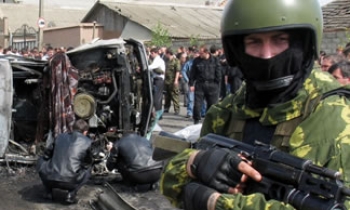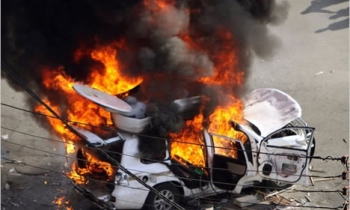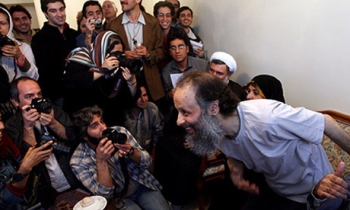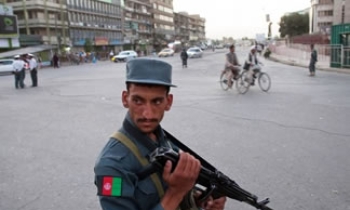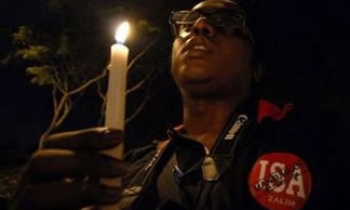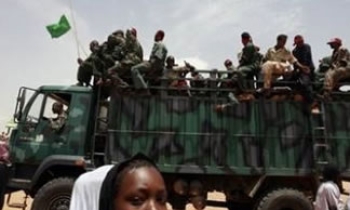The use of embedded reporters by major newspapers in the United States (US) did affect the number and the type of stories published, resulting in more articles about the US soldiers' personal lives and fewer articles about the impact of the war on Iraqi civilians.

A researcher at the Pennsylvania State University analysed 742 print news articles by 156 journalists from the major combat period from the beginning of the Iraqi war (March 19, 2003) until the "Mission Accomplished" speech by US President George W Bush (May 1, 2003). The researcher, Andrew M Lindner, presented his findings August 11 at the annual conference of the American Sociological Association.
"The majority of war coverage in the study heavily emphasised the soldier's experiences, of the war while downplaying the effects of the invasion on the Iraqi people," said Lindner. "This study offers the first systematic documentation of the substantive content of the war coverage," he noted. "Many critics of the embedded reporting programme rely on individual anecdotes or stories, but no one else has completed a thorough analysis of the coverage itself."
Lindner examined reports from 67 news sources including the New York Times, the Washington Post, the Los Angeles Times, USA Today, the Chicago Tribune, Reuters, and the Associated Press. He studied articles written by only those reporters based in Iraq and not by those based in surrounding regions. Electronic media broadcasts also were not studied.
In 2003, the Pentagon introduced a programme allowing journalists to be "embedded" with military units during the invasion due to media complaints about restricted access during earlier conflicts. The news reporter usually undergoes some boot camp-style training before being attached to a military unit.
The Penn State sociologist defined three categories of journalistic vantage points within Operation Iraqi Freedom: embedded reporters, reporters stationed in Baghdad hotels only, and independent reporters. Article topics were combat, military movement, soldier deaths, soldier source and soldier human interest.

"People do ask whether embedded reporters are less objective and can provide neutral reporting?," Lindner noted. "But the question may really be whether embedded reporters had the access or opportunity to talk with people other than the soldiers."
Combining all types of reporters, stories quoting soldiers made up 71.6 per cent of the stories in the study, followed by combat and military movement stories at 46 per cent each, nearly 24 per cent on soldier human, interest and 16 per cent on soldier deaths, according to the study.
Embedded reporters published stories with soldier sources in 93.2 per cent of the stories analysed. Military movement stories were at nearly 52 per cent, combat stories at 46 per cent and soldier deaths at nearly 16 per cent.
Baghdad-stationed reporters split topics more evenly with 34.6 per cent on combat stories, nearly 28 per cent on military movements, 24.4 per cent with soldier source stories, 10 per cent for soldier deaths and no solider human interest stories. For independent reporters, the breakdown was 46.2 per cent (combat), 42.8 per cent (soldier source), 41.4 per cent (military movement) and 1.4 per cent (soldier human interest).
"Now from the Iraqi perspective, the analysis found that the same reporters mostly covered property damage with 45.3 per cent of their stories, stories with Iraqi sources at 41.2 per cent, bombing stories at 30.2 per cent, civilian deaths at 21.6 per cent and Iraqi human interest stories, 20.9 per cent," Lindner said.

Independent reporters, who worked for the major media but were not assigned to a military unit or located in Baghdad hotels, had the highest amount of stories quoting Iraqi people (73.1 per cent); stories on property damage (nearly 47 per cent); Iraqi human interest (43.4 per cent); bombing stories (41.4 per cent) and civilian deaths, (29.7 per cent). Baghdad-stationed reporters were at: 75 per cent (Iraqi sources); 66 per cent (property damage); 49.6 per cent, civilian deaths; and 45.7 per cent (bombing stories); and 41 per cent (Iraqi human interest).
Studying the front pages of selected newspapers, the sociologist found that 71 per cent of the stories published came from the embedded reporters. Similarly, 69 per cent of the stories in the front news sections were written by the same group.
For example, the New York Times did establish the three groups of reporters: embedded, Baghdad-stationed and independent. The study shows that 52 per cent of the Times’ published articles came from the independent reporters, 37 per cent from embedded reporters and 12 per cent from the Baghdad-stationed group. That compares with the Washington Post with 55 per cent of its articles from embedded reporters, 29 per cent from independent, and 15 per cent from the Baghdad-stationed reporters.
On the West Coast, 60 per cent of the Los Angeles Times stories came from embedded reporters, 40 per cent from Baghdad-stationed reporters. In the Midwest, the Chicago Tribune had 64 per cent from embedded journalists, 33 per cent from independent and 13 per cent from the Baghdad-stationed group. For USA Today, 100 per cent of its articles during that period came from embedded reporters, the study found.
"The goal was to provide sound data and evidence when the media are arguing about the value of programmes like embedded reporting and whether to participate," Lindner said. "Although the media were aware of the effects of such reporting, articles by embedded reporters were both more prominent and more widely available than other types of reporting."

